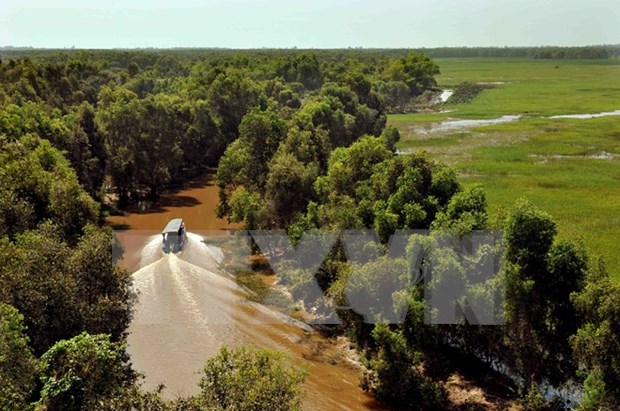Panels seek to examine Truong Son biodiversity
Participants discussed opportunities and challenges in applying standard methods for the examination of fauna biodiversity in the central Truong Son region during a workshop in Hue city on Nov.10-11.
 Part of central Truong Son region (Photo: VNA)
Part of central Truong Son region (Photo: VNA)The function forms part of the carbon reserve and forest biodiversity conservation project (Carbi) funded by the German Federal Ministry for Environment, Nature Conservation, Building and Nuclear Safety (BMUB) in Vietnam between 2011 and 2016.
It reviewed the preservation efforts in the central Truong Son region – which boasts rich biological diversity and supplies important ecological services for locals and economic sectors.
The region comprises seven cities and provinces, namely Quang Tri, Thua Thien – Hue, Quang Nam , Kon Tum, Gia Lai, Binh Dinh, and Da Nang.
The outcomes of the Carbi project would help experts expand law enforcement and examination on the regional biodiversity and map out a national programme in the field.
They also significantly contribute to the prevention of deforestation and forest degradation in the border areas of southern Laos and central Vietnam , particularly the Bach Ma National Park and Sao La Nature Reserve in Thua Thien – Hue and Sao La Nature Reserve in Quang Nam province.
Additionally, the Germany-funded project covers the protection of wildlife species of globally biological value and at risk of extinction, including Sao La (Pseudoryx nghetinhensis) – one of the world’s rarest mammals found only in the Truong Son Range of Vietnam and Laos.
It also creates connectivity between Vietnamese and Lao nature reserves and biological corridors in the central Truong Son region. Under the project, the two countries’ governments have closely worked together to intensify protection of conservation areas.
The Vice Chairman of the People’s Committee of Thua Thien – Hue, Dinh Khac Dinh, said the significant outcome of the project was to discover Sao La and Mang (a species of muntjac deer) in the region and then set up a forest protection team and Sao La Nature Reserve in the province to mitigate the threats to rare animals.
Based on the initial success of the project, the Leibniz Institute for Zoo and Wildlife Research has continued to study the biodiversity and habitat of wildlife animals and their interaction with human beings for building a scientific basis for new measures to protect wild animals.-VNA













